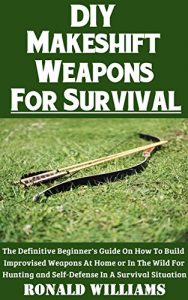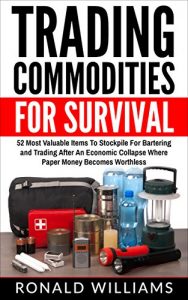Disaster preparedness is no longer something that should solely be the concern of someone living on the coast who could be at risk of hurricanes or someone in the Midwest who has to live under constant fear of tornadoes.
Rather, preparedness needs to account for all kinds of different disasters, including ones that are manmade such as an economic collapse, power grid down, or a nuclear power plant accident. A disaster can be something that’s only untimely and inconvenient, but it can also be something that is destructive and life threatening.
Regardless of the type of disaster you expect to face or will face, when it is does strike you should only have one goal in mind: your family’s survival. The good news for you is there are preparedness steps that you can take to minimize the effect a disaster has on your family and increase your chances of survival, and following those steps is what this book is about.
Why should you bother to prepare for a disaster? The reason why is because the world is simply not as safe as you would want it to be or even believe it might be. On the contrary, we live in a chaotic and unpredictable world where literally anything can happen.
When disaster does strike, it does so quickly and when you least it expect it. It could force you to bug in at your home to outlast the chaos going on outside, or it could force you to evacuate your home entirely and hit it out on the open road.
In an instant, all of the luxuries and services that you are used to such as running water, food, power and electricity, gas, and communications could become cut off and remain cut off for a long time.
Ask yourself an honest question: in the event of a large scale and long term disaster where the world as you know it has suddenly changed in the blink of an eye, would you be able to guarantee your family’s safety?
Even if you answer with ‘no,’ the good news for you is that by working together as a team in advance of the disaster, the chances of survival for you and your family skyrocket dramatically.
In this book, I’m going to walk you through a series of seven critical steps that you must follow in order to make your family more prepared for whatever disaster comes your way.
These steps are:
-Getting your spouse or partner onboard with prepping
-Teaching your children about survival and disaster preparedness
-Building a complete bug out bag for each of your children
-Stockpiling enough supplies to sustain your family over the long term
-Bugging in with your family at home in the midst of a crisis
-Writing an effective evacuation plan with your family to prepare you for the possibility of abandoning your home
-Bugging out with your family should you indeed be forced to abandon your home and possessions
Knowing what you need to do in a disaster situation and instructing your family on what to do is a massive responsibility that you have as a parent, and it will ensure that all of you remain prepared and protected when a massive catastrophe happens.
Rather, preparedness needs to account for all kinds of different disasters, including ones that are manmade such as an economic collapse, power grid down, or a nuclear power plant accident. A disaster can be something that’s only untimely and inconvenient, but it can also be something that is destructive and life threatening.
Regardless of the type of disaster you expect to face or will face, when it is does strike you should only have one goal in mind: your family’s survival. The good news for you is there are preparedness steps that you can take to minimize the effect a disaster has on your family and increase your chances of survival, and following those steps is what this book is about.
Why should you bother to prepare for a disaster? The reason why is because the world is simply not as safe as you would want it to be or even believe it might be. On the contrary, we live in a chaotic and unpredictable world where literally anything can happen.
When disaster does strike, it does so quickly and when you least it expect it. It could force you to bug in at your home to outlast the chaos going on outside, or it could force you to evacuate your home entirely and hit it out on the open road.
In an instant, all of the luxuries and services that you are used to such as running water, food, power and electricity, gas, and communications could become cut off and remain cut off for a long time.
Ask yourself an honest question: in the event of a large scale and long term disaster where the world as you know it has suddenly changed in the blink of an eye, would you be able to guarantee your family’s safety?
Even if you answer with ‘no,’ the good news for you is that by working together as a team in advance of the disaster, the chances of survival for you and your family skyrocket dramatically.
In this book, I’m going to walk you through a series of seven critical steps that you must follow in order to make your family more prepared for whatever disaster comes your way.
These steps are:
-Getting your spouse or partner onboard with prepping
-Teaching your children about survival and disaster preparedness
-Building a complete bug out bag for each of your children
-Stockpiling enough supplies to sustain your family over the long term
-Bugging in with your family at home in the midst of a crisis
-Writing an effective evacuation plan with your family to prepare you for the possibility of abandoning your home
-Bugging out with your family should you indeed be forced to abandon your home and possessions
Knowing what you need to do in a disaster situation and instructing your family on what to do is a massive responsibility that you have as a parent, and it will ensure that all of you remain prepared and protected when a massive catastrophe happens.












